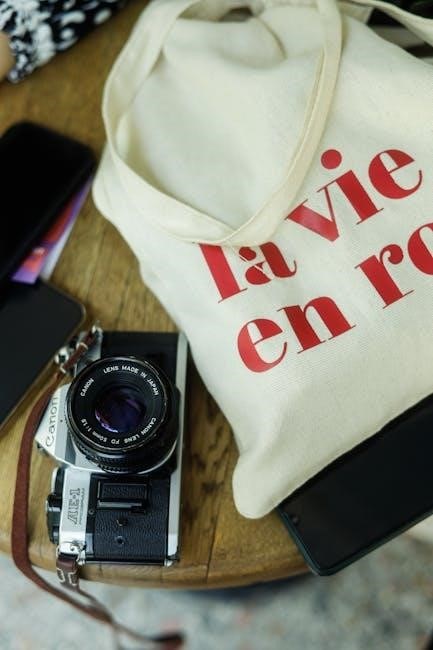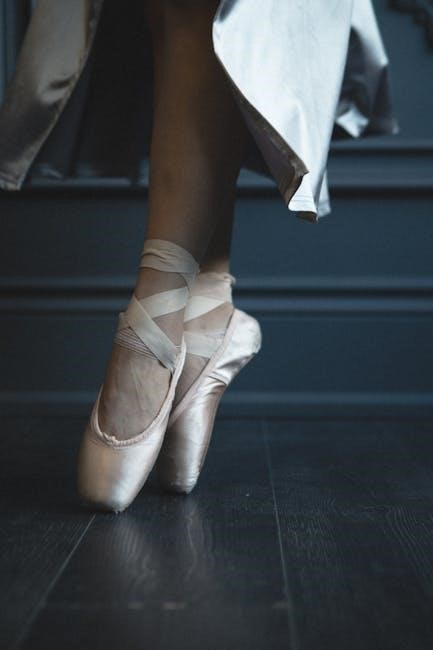Knitting socks is a popular DIY project that offers customization, comfort, and creativity. With free PDF patterns and guides, you can easily create unique, personalized socks. Perfect for beginners or experienced knitters, this craft allows you to design your perfect footwear.
Materials and Tools Needed
To start knitting socks, you’ll need a few essential materials and tools. Begin with a good quality yarn specifically designed for sock knitting, such as merino wool or bamboo blends, which offer softness and durability. Choose a yarn weight suitable for your desired thickness. Next, select your knitting needles—double-pointed needles (DPNs) or circular needles are ideal for sock projects. A tapestry needle is handy for weaving in ends, and a measuring tape will help ensure the perfect fit. Scissors are necessary for cutting the yarn, and stitch markers can help track your progress, especially when shaping the heel or toe. Additionally, a stitch holder or spare needle can be useful for holding stitches during heel construction. If you’re using a pattern, make sure to have it printed or downloaded from a reliable source, such as the free PDF guides available online. Having all these tools ready will set you up for a smooth and enjoyable sock-knitting experience.

Step-by-Step Guide to Knitting Socks
Start by casting on stitches and knitting the toe. Then, work the foot and heel, shaping as needed. Finally, knit the leg and cuff, ensuring a snug fit. Follow patterns for precise guidance.

3.1. Toe-Up Method
The toe-up method is a popular knitting technique where you start at the toe and work your way up to the cuff. This approach allows for precise control over sock length and fit. Begin by casting on a small number of stitches using a method like the long-tail cast-on or a toe-up specific cast-on. Knit a flat toe, then gradually increase stitches to form the foot. Use double-pointed needles or circular needles to accommodate the growing number of stitches. The toe-up method is ideal for knitters who prefer a seamless construction and want to avoid seaming. It also allows for trying on the sock as you go, ensuring a perfect fit. Many free PDF patterns available online provide detailed step-by-step instructions for this method, making it accessible to both beginners and experienced knitters. This technique is especially favored for its versatility and customization options.
3.2. Heel Construction

Heel construction is a critical step in knitting socks, ensuring durability and comfort. The double heel method is commonly used, involving working back and forth on a specific number of stitches to create a sturdy heel. Start by knitting a heel flap, then shape the heel by turning the work. Pick up stitches along the heel flap and work in the round to complete the heel. Proper fit is essential, so many free PDF patterns offer detailed instructions for various heel styles. Techniques like the heel flap and gusset are widely used, with tutorials available online. Heel construction requires attention to detail to ensure a seamless finish. Practice and patience are key to mastering this step, making it a cornerstone of sock knitting. With the right guidance, knitters can achieve professional-looking results, ensuring their handmade socks are both comfortable and long-lasting.

Customization Options for Your Socks

Customize your socks with various yarns, sizes, and patterns. Choose from jacquard, Nordic designs, or stripes for a personalized touch. Adjust sizes for a perfect fit and add unique details like cables or motifs. Free PDF patterns offer endless creativity.
4.1. Choosing Different Yarns

Selecting the right yarn is crucial for knitting socks, as it directly impacts comfort, durability, and appearance. Wool and wool-blend yarns are popular for their warmth and moisture-wicking properties, making them ideal for cold weather. Cotton yarns, on the other hand, are breathable and soft, perfect for spring and summer. For a luxurious feel, consider cashmere or bamboo blends, while synthetic yarns like nylon offer durability and stretch. Many free PDF patterns suggest specific yarns, ensuring the best results. Experiment with colors and textures to create unique designs. Whether you prefer vibrant hues or subtle tones, the right yarn choice will elevate your sock-knitting project. Free resources often include tips for pairing yarns with patterns, helping you achieve the perfect combination for your custom socks.
4.2. Adjusting Sizes for a Perfect Fit
Ensuring a perfect fit is essential when knitting socks, and free PDF patterns often provide guidance on adjusting sizes. Many patterns offer multiple size options, such as Petit (56 stitches), Moyen (60 stitches), and Grand (64 stitches), catering to different foot sizes. To achieve the best fit, it’s crucial to measure your foot accurately, focusing on the length and circumference. Some patterns include sizing charts or formulas to help you customize the fit further. Additionally, techniques like adjusting the number of stitches or rows can accommodate various foot shapes and preferences. Resources may also suggest different heel or toe styles to enhance comfort. Avoid common mistakes by swatching to ensure proper gauge, as this directly affects the size and fit. With the right adjustments, you can create socks that are not only comfortable but also tailored to your unique measurements. Free PDF guides often include tips to help you master these adjustments effortlessly.

Troubleshooting Common Knitting Issues
Knitting socks can sometimes present challenges, but many common issues can be easily resolved with the right techniques. One frequent problem is mismatched stitches, which can lead to ill-fitting socks. This often occurs due to incorrect gauge or inconsistent tension. To fix this, ensure you swatch before starting and maintain steady knitting pressure. Another issue is heel construction, where the heel may not align properly with the foot. This can be addressed by carefully counting stitches and following the pattern’s instructions for shaping. Additionally, some knitters struggle with the toe-up method, where the toe may not close neatly. Using the correct number of stitches and ensuring the decreases are evenly spaced can resolve this. Free PDF guides often include troubleshooting sections or video tutorials to help overcome these common hurdles. By addressing these issues early, you can achieve professional-looking results and enjoy the satisfaction of wearing your handmade socks.
Free PDF Resources and Patterns
Discover a variety of free PDF patterns for knitting socks, available for easy download. These resources offer detailed guides, tutorials, and customizable designs to suit every skill level and style preference, ensuring your knitting projects are both fun and successful.
6.1. Where to Download Free Patterns
Discover a wide range of free sock knitting patterns in PDF format from various online resources. Websites like Bergère de France, Katia, and TeaCakeMake offer downloadable patterns for all skill levels. These resources provide detailed instructions, from basic toe-up designs to intricate Nordic jacquard styles. Many patterns include customizable sizes, ensuring a perfect fit for any foot shape. Additionally, some sites offer companion guides, such as project sheets and video tutorials, to help you master techniques like heel construction and seamless joins. Whether you’re a beginner or an experienced knitter, these free PDF patterns are a great way to explore new designs and expand your knitting repertoire. Simply visit the websites, browse their collections, and download the patterns that suit your preferences. With these resources, you can create unique, high-quality socks tailored to your style and comfort needs;

